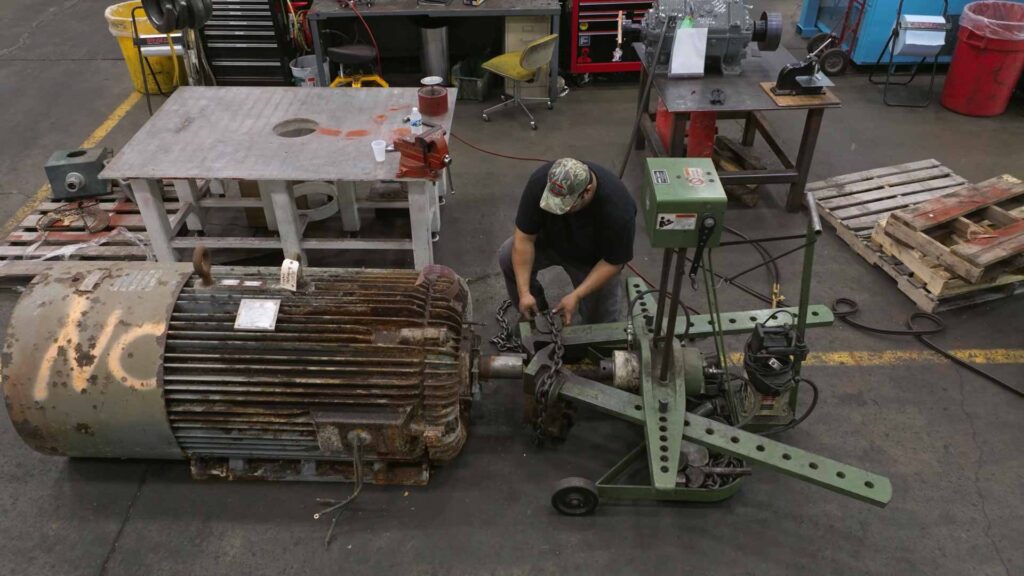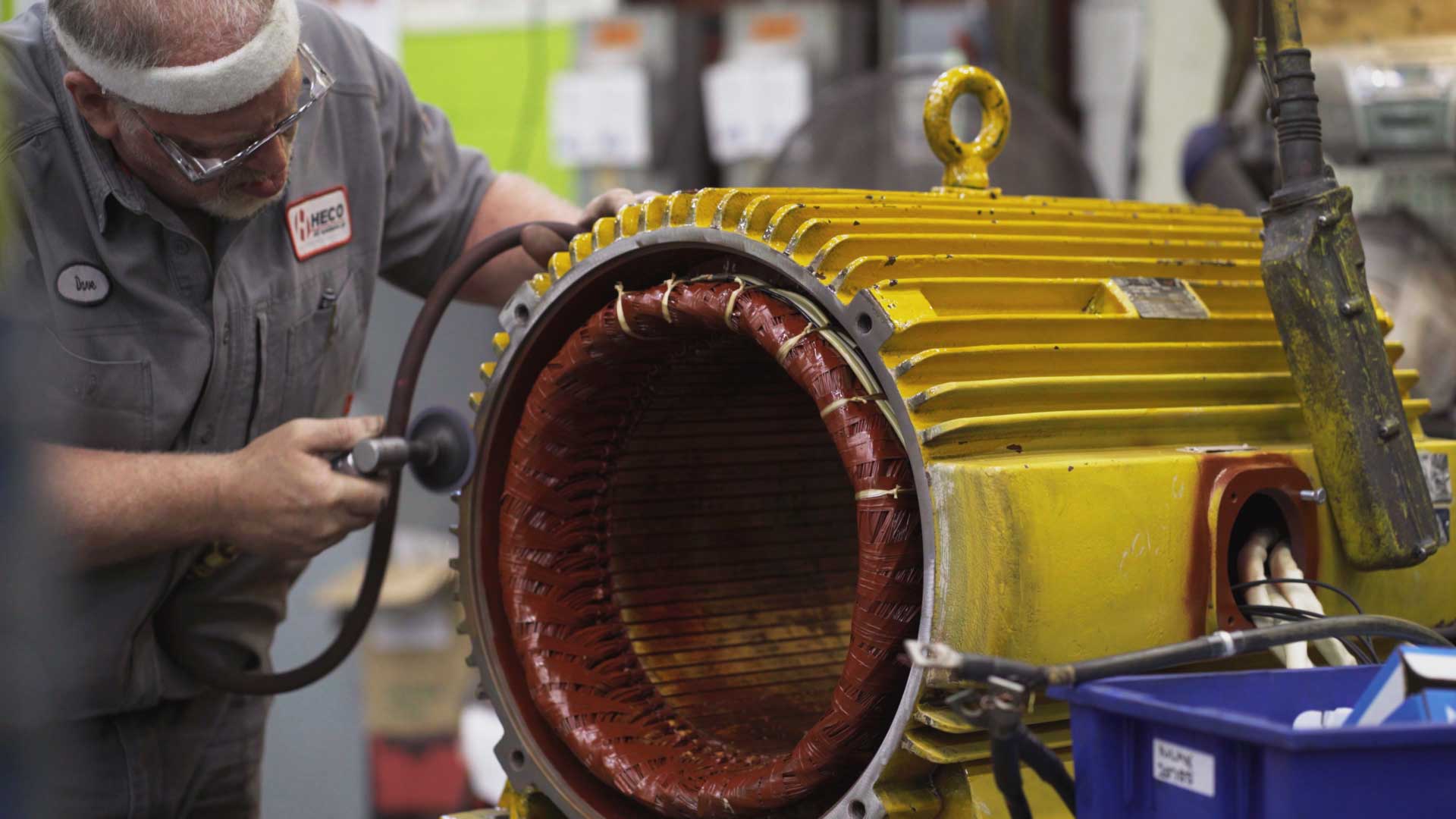Motor repair business flips the maintenance model - HECO
February 13, 2023
HECO has partnered with relayr, a provider of software solutions, to move from a time-based preventive maintenance or route-based Predictive maintenance solution to one that is more outcomes-based, with the aim of moving toward equipment-as-a-service models. The publication Plant Services recently wrote an article about it that you can read below or by visiting the publication.
For more than 60 years, third-generation family business HECO has been a leader in electric motor maintenance and repairs and system overhauls. Some recent acquisitions and partnerships have begun to significantly evolve HECO’s business model and ultimately, its relationship with its manufacturing customers.
Most recently, its partnership with relayr, a provider of software solutions, has started moving the business from a time-based preventive maintenance or route-based predictive maintenance solution, to one that is more outcomes-based, with hope to move toward equipment-as-a-service models. The key to this business model for industry, in the case of a motor repair company, is truly aligning the business goals with the goals of its customers.
Generally, in the motor repair world, if your customer loses, you win. Justin Hatfield, president of HECO, had a different idea for the future of the motor repair business. “Something I have always struggled with in our industry is that we would win when our customers would lose,” Hatfield says. A motor failed; a plant is down; it’s losing money and can’t operate. “And we’re getting that win from that repair or that sale,” Hatfield says. “I never really liked that, and I said, there has to be a better way to look at this, to where we can truly align mutual benefit to each other.”
Hatfield had been struggling with that dynamic for a number of years, trying to figure out how to find a meeting place for company and customer goals. The new partnership with relayr has allowed them together to move in that direction.
HECO started as a traditional motor repair shop in 1959. Based in Kalamazoo, MI, it serves primarily the Midwestern U.S. Focused on the maintenance and repair of rotating equipment for heavy industry, HECO finds itself “anywhere where there’s smokestacks. Those are our types of customers,” Hatfield says, such as cement, paper and chemical plants, steel mills, power plants, plastics, water, wastewater and pharmaceutical facilities, and general manufacturing.
“We do truly want to find a unique way to do things versus just repeating the same thing over and over, as it’s traditionally been done,” Hatfield says. This is evident in the company’s transition over the years, starting from repair and maintenance and adding equipment sales and equipment management services into the mix. Over the last decade, HECO has moved more and more into predictive maintenance and condition monitoring services, starting with the acquisition of Predictive Maintenance Services Inc. in 2013 and Integrated Maintenance Technologies in 2017, as well as Zeluff Associates, a local consulting firm which blended into the existing PdM team.
HECO’s initial move into PdM and IoT-based solutions, which Hatfield described as “clunky,” was still leading the company in the right direction. With a route-based approach, HECO was trying to catch failures for its customers before they happened, so it was a logical transition, Hatfield says, “To say, how do we get better at this?”
As the company transitioned to more advanced systems early on, it was still more about selling hardware, the sensors and equipment needed for predictive maintenance data analysis. But the industry more and more is moving toward software solutions and less capital-intensive business models. Hatfield admitted that seeing the company’s way from a hardware-based world to following a new path wasn’t always easy to see the way, but relayr helped clarify this new world for HECO.
The relationship is very much based on value creation for the customer, which is what Hatfield was in search of from the beginning. They both have solutions to sell and hardware to match, if needed, but the selling process and customer interaction has changed significantly. “It truly changed the way we interact with customers quite a bit,” Hatfield says. “It became less transactional, so it’s not about an individual order or an individual purchase order. It’s truly about, where can we bring value?”
This outcomes-based approach to equipment management and working with customers from soup to nuts is at the core of what drives relayr solutions. “I think it is taking a longer term view to the market and certainly to the customers as well, to be able to support them throughout the lifecycle,” says Jessica Poliner, CEO of relayr.
The company, founded in 2013, works in a variety of customers and offers solutions to help industry make the digital transformation. Recently, relayr has worked to narrow its focus down to some key areas: rotating machinery; a product for industrial companies in the elevator and door loading space; and more broadly with equipment-as-a-service business models.
“Our currency is really the data,” Poliner says. Its IIoT technology and services are all powered by data, customized and particular for each customer. The shift toward data-driven maintenance is supporting new business models, as industrial companies shift from capital expenditure (CapEx) to operating expenses- (OpEx) based offerings.
Together HECO and relayr have launched APOLLO, a comprehensive condition-based monitoring solution focused on asset health monitoring, asset inspection and reporting, with HECO service and domain expertise that allows asset performance guarantees. APOLLO uses relayr’s Skyler, an IoT-enabled predictive maintenance solution, and the partners can customize a solution for each customer.
Where appropriate, facilities can also still use more traditional maintenance strategies. The entire facility and an asset map of the plant will guide the maintenance strategies, based on those assets that can run to failure, and those that would benefit from preventive maintenance, predictive maintenance, and remote monitoring. “There are assets in every plant that can fit into those different boxers, so our approach with APOLLO is to design a system that makes sense value-wise for our clients,” Hatfield says. By analyzing a plant’s entire asset inventory, comprehensive maintenance strategies, and production costs, customers receive a value proposal, or the potential return on investment, based on the system and value the APOLLO product can create long term. “I’ll tell you that sales cycle is completely different from anything HECO has ever done,” Hatfield says.
Currently, the payment structure for the APOLLO solution is primarily subscription-based, but there is flexibility, where customers have other needs, Hatfield says. The move from more route-based approaches to more outcome-based business models is a natural transition for IIoT solutions, and that will likely be the future for the HECO/relayr partnership and products. More and more companies are understanding the value of as-a-service models for manufacturing. “I typically find that if we describe it as OpEx, they don’t necessarily understand,” Hatfield says. As with any new idea or innovation, it requires some education, especially for facilities that are used to the consistency of a route-based service and paying every month or every quarter for equipment analysis.
Making the digital transformation can also be hardware- or capital-intensive, if the facility needs new sensors and equipment to collect the needed data for analysis. “But that’s not what end users want,” Hatfield says. “They don’t want more hardware to maintain.” With an OpEx-model, HECO does that maintenance, and when technology is obsolete, it gets replaced.
Relayr also has experience with driving this change in other industries. Poliner says relayr has deployed equipment-as-a-service models with other partners, where customers have a pay-per-part payment structure, and relayr is exploring a pay per pack structure with a packaging customer. APOLLO is a good stepping stone for that change with HECO and the electric motor industry.
“We aren’t talking about sensors anymore. We aren’t talking about hardware. We’re truly talking about the data. We’re talking about value that the customer can have from that data,” Hatfield says.
Poliner says of the journey toward digital transformation, the overall commitment is very important. “A lot of companies talk about needing to do something digital or leveraging sensors or having data analytics or any of those pieces,” Poliner says. “It really is an alignment on business objectives and not just doing a digital transformation to do a digital transformation because that’s the trendy thing to do, per se, or Industry 4.0 or whatever the buzzwords are in the market. It needs to go much further than that. And I think that’s part of the good fortune that we have with a partner like HECO,” Poliner says.
Visit Plant Services to read more articles from their publication.
Posted in Uncategorized


